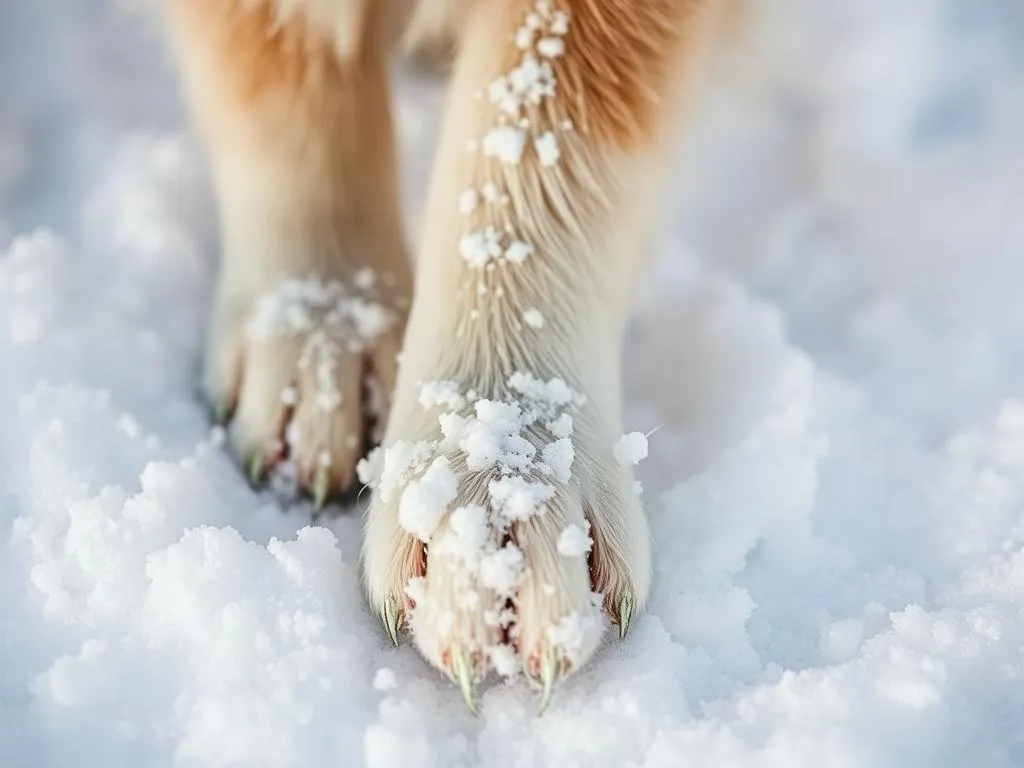
Introduction
Winter can be a magical time for both dogs and their owners, but it also presents unique challenges, particularly when it comes to dog health care. As the snow begins to fall, pet owners must be vigilant about the potential hazards that come with it. Snow can accumulate in a dog’s fur and paws, leading to discomfort and even health risks if not properly managed. In this article, we will explore the importance of maintaining your dog’s health during winter and provide detailed guidance on how to get snow off a dog’s fur and paws effectively.
Understanding the Impact of Snow on Dogs
Physical Effects of Snow on Dogs
Snow can have various physical impacts on dogs, primarily affecting their fur and skin. When dogs play in the snow, their fur can become matted and hold moisture, which can lead to skin irritation. Long-haired breeds are particularly susceptible to this issue, as snow can clump in their fur, creating ice balls that can tug at the skin and cause pain.
Moreover, prolonged exposure to cold and wet conditions can result in serious health risks such as frostbite and hypothermia. Frostbite typically affects the ears, tails, and paws, leading to tissue damage that can be severe if not recognized in time. Hypothermia is another critical condition that can occur when a dog’s body temperature drops dangerously low due to cold exposure.
Behavioral Changes in Dogs During Winter
As winter sets in and snow blankets the ground, you may notice changes in your dog’s behavior. Many dogs tend to become less active during this season, especially if they dislike cold or wet conditions. Others may become overly excited at the sight of snow, prompting them to engage in more vigorous play. Understanding these behavioral shifts is crucial in ensuring that your dog remains healthy and happy throughout winter.
Preparing Your Dog for Snowy Conditions
Choosing the Right Gear
To combat the challenges posed by snow, it’s essential to equip your dog with the right gear. Depending on your dog’s breed, size, and coat type, various protective clothing options can help keep them warm and dry.
- Dog Coats: Insulated and waterproof coats can provide extra warmth for short-haired breeds or those not accustomed to cold weather.
- Booties: Dog booties are particularly useful for protecting paws from cold surfaces and preventing snow from accumulating between their toes.
The benefits of using protective gear extend beyond comfort; they can also prevent injuries and health issues associated with snow exposure.
Pre-Snow Grooming
Before your dog ventures into snowy conditions, pre-snow grooming is essential. Regular grooming helps to remove loose fur and dirt, preventing snow from clumping in your dog’s coat.
- Brushing: Use a slicker brush or a comb to detangle and smooth out your dog’s fur. Focus on areas that are prone to matting, such as behind the ears and between the legs.
- Trimming: Consider trimming the fur around your dog’s paws and belly to minimize snow accumulation.
By ensuring your dog’s coat is well-groomed, you can significantly reduce the amount of snow that sticks to their fur.
How to Remove Snow from a Dog’s Fur and Paws
Techniques for Effective Snow Removal
Removing snow from your dog after playtime is crucial for their comfort. Here’s a step-by-step guide on how to get snow off a dog’s fur and paws effectively:
- Inspect: Before you start, carefully inspect your dog’s fur and paws for any signs of ice accumulation or discomfort.
- Shake Off: Encourage your dog to shake off excess snow. This simple action can help dislodge a lot of the snow.
- Manual Removal: Use your hands to gently brush away snow from their fur. Pay particular attention to the underbelly, legs, and any areas where snow tends to accumulate.
- Paw Care: For the paws, gently wipe them with a dry cloth or towel to remove any snow and ice. Check between the toes for any signs of snowballs forming.
- Rinse (if necessary): If there’s stubborn snow or ice stuck in their fur, you may need to rinse the area with lukewarm water. Be sure to dry them thoroughly afterward.
Tools and Products to Aid in Snow Removal
Having the right tools can make snow removal easier and more efficient. Here are some recommended items:
- Pet Brushes: A slicker brush or a pin brush can help detangle fur and remove clumped snow.
- Towels: Keep a few absorbent towels handy for drying off your dog after outdoor play.
- Paw Balm: After snow exposure, applying a pet-safe paw balm can help protect your dog’s paws from cracking and dryness.
- Moisturizers: Consider using a moisturizer on your dog’s skin and fur to prevent irritation caused by cold conditions.
Dealing with Ice and Snow Buildup
Ice balls can form between your dog’s toes, which can be painful and lead to further issues if not addressed. Here’s how to deal with them effectively:
- Immediate Removal: If you notice ice balls, remove them as soon as possible. You can gently pull them apart with your fingers or use a warm cloth to melt the ice.
- Preventive Measures: Regularly check and clean your dog’s paws during winter outings to prevent ice from building up.
Aftercare for Your Dog Post-Snow Play
Cleaning and Drying
Once your dog has finished playing in the snow, it’s important to clean and dry them thoroughly. Wet fur can quickly lead to chills and discomfort.
- Drying: Use a towel to dry your dog off completely, focusing on their paws and underbelly. If your dog enjoys baths and the weather permits, consider giving them a quick rinse with lukewarm water.
- Bathing: If your dog has been rolling in the snow for an extended period, a full bath may be necessary. Use a gentle dog shampoo, and ensure you rinse thoroughly to avoid any residue.
Monitoring for Health Issues
After a day of frolicking in the snow, keep an eye out for any signs of health issues that may arise.
- Irritation: Look for any signs of redness or irritation on their skin, especially around the paws and belly.
- Frostbite Symptoms: Be aware of symptoms of frostbite, such as pale or gray skin, swelling, or blisters.
- Veterinary Consultation: If you notice any concerning symptoms or if your dog seems unusually lethargic, consult your veterinarian promptly.
Tips for Winter Dog Care
Maintaining Healthy Paws
To ensure your dog’s paws remain healthy throughout the winter, implement regular checks and care routines:
- Routine Inspections: Check for cracks, dryness, or any debris stuck between the pads.
- Moisturizing: Apply a paw balm regularly to keep the paw pads hydrated and protected from the harsh winter elements.
Ensuring Overall Health in Cold Weather
Maintaining your dog’s overall well-being during winter is essential. Consider the following:
- Nutrition: Ensure your dog receives a balanced diet with adequate nutrients to support their energy needs during colder months.
- Exercise: While outdoor play may be limited, find ways to provide mental and physical stimulation indoors. Engage them with toys, puzzles, or indoor games.
Conclusion
In conclusion, caring for your dog during winter, especially regarding how to get snow off a dog’s fur and paws, is vital to their health and comfort. By taking preventive measures, properly grooming, and removing snow promptly, you can help ensure your furry friend enjoys the beauty of winter without suffering from its potential hazards. Implement the tips and techniques discussed in this article, and enjoy a safe and happy winter with your canine companion.
FAQs
How often should I clean my dog’s paws in winter?
It’s advisable to check and clean your dog’s paws after every walk or outdoor play session. This helps prevent snow and ice buildup.
Are there any specific breeds more affected by snow?
Breeds with shorter coats or those that are not accustomed to cold weather may be more affected by snow. Always consider your dog’s size, coat type, and overall health.
Can snow exposure lead to any long-term health issues in dogs?
If not managed properly, prolonged exposure to snow can lead to conditions like frostbite or hypothermia, which may cause long-term health issues.
What should I do if my dog gets snow stuck in their fur?
Gently remove the snow with your hands or a brush. If it’s stubborn, warm water can help dissolve the snow. Always dry your dog thoroughly afterward.









